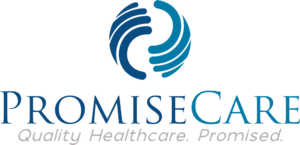Red yeast rice, a fermented product of white rice and Monascus purpureus yeast, has been found to help manage cholesterol levels, according to research reviewed by PromiseCare Medical Group.
The quality of red yeast rice supplements can vary significantly by brand, emphasizing the importance of selecting a reputable brand for safety and efficacy.
PromiseCare Medical Group’s guidelines suggest a typical dosage of two 600 mg capsules once or twice daily, taken with meals. Evening intake is recommended as it aligns with the body’s natural cholesterol production cycle.
Understanding the nuances of red yeast rice and adhering to these guidelines can help individuals harness its potential benefits for a healthier lifestyle.
Description and Brand Names
Red yeast rice is a fermented fusion of white rice and Monascus purpureus yeast that has been used in traditional Chinese medicine for centuries to promote cardiovascular health. The naturally occurring compound monacolin K, chemically identical to the prescription lovastatin, is at the heart of its benefits. Monacolin K has been prized and scrutinized for its remarkable effects on cholesterol levels.
When considering adding red yeast rice to a regimen, navigating the complex landscape of supplements is essential. Products can vary significantly in their monacolin K content, making choosing a reputable brand that prioritizes quality and safety is crucial. Some products may make impressive claims, but regulatory complexities have led to warnings against products containing added lovastatin.
Understanding the intricacies of red yeast rice and its active compounds can help individuals make informed decisions about harnessing its potential to support cardiovascular well-being.
Red yeast rice supplements are available in various forms and strengths, and their quality and efficacy can differ. While some products may be labeled as ‘all-natural’ or ‘organic,’ it’s crucial to verify the ingredients and manufacturing process to ensure the product meets individual needs and safety standards.
US Brand Name
Selecting a reputable US brand of Red Yeast Rice can be an essential step in harnessing the potential of this fermented fusion to support cardiovascular well-being.
A good option is a high-quality supplement with 600 mg of Red Yeast Rice Powder per capsule, sourced from Monascus purpureus yeast, that has been lab-tested in the US to meet strict quality standards.
Look for a non-GMO, gluten-free, and additive-free product to ensure trust in what you’re putting into your body.
Descriptions
Red yeast rice is a fermented product combining Monascus purpureus and white rice, resulting in a complex composition of compounds, including pigments, sterols, and monacolin K.
Monacolin K is structurally identical to lovastatin, a compound known for lowering cholesterol levels in the body. The levels of monacolin K in red yeast rice products can vary significantly, ranging from 0.09 mg to 5.48 mg per 1,200 mg of the supplement. Monacolin K may help reduce cholesterol levels, contributing to a lower risk of heart disease.
However, safety concerns have been raised regarding potential side effects similar to those of statin medications, including liver damage and muscle-related issues, particularly at high doses. In the United States, products containing considerable levels of monacolin K aren’t allowed to be marketed as dietary supplements due to regulatory classifications.
Understanding red yeast rice’s potential benefits and risks is essential for making informed decisions about one’s health. Key considerations include the variability of monacolin K levels in different products and the possible risks associated with its consumption.
Before Using
When considering adding red yeast rice to a regimen, assessing individual health needs and circumstances is essential.
Pregnant or breastfeeding individuals, those with allergies, or people taking medications that may interact with red yeast rice should discuss their situation with a healthcare provider before starting.
Age is also significant in determining safe and effective use, whether the individual is a young parent or a senior.
Allergies
Adding red yeast rice to a supplement routine requires consideration of potential allergies, especially for individuals sensitive to mold or yeast, as these can increase the risk of an adverse reaction.
Prioritizing health and taking necessary precautions is crucial for those with allergies. Red yeast rice is derived from the fermentation of Monascus purpureus, a type of mold that can exacerbate allergic reactions in some individuals.
Potential allergens to watch out for:
- Mold or yeast
- Rice or other grains
- Fillers or additives in red yeast rice products
- Cross-contamination with other allergens during processing
- Unknown ingredients in unregulated products
To ensure safe use, consulting a healthcare provider is essential before adding red yeast rice to a regimen. They can help weigh the benefits and risks, assess allergy history, and recommend suitable products.
Checking product labels carefully and choosing reputable manufacturers that adhere to strict quality control standards is vital for health and safety.
Pediatric
When considering supplements like red yeast rice for children, it’s essential to exercise caution due to the limited research on their safety and effectiveness in kids. Cholesterol-lowering supplements, including red yeast rice, are generally not recommended for children unless prescribed by a healthcare professional for a specific medical condition.
Concerns about potential risks associated with red yeast rice, such as muscle pain, liver damage, and gastrointestinal issues, are heightened in children as their bodies are still developing. Additionally, the quality and consistency of red yeast rice products can vary, impacting their safety for use in children.
To prioritize a child’s safety, it’s recommended that they consult with a healthcare professional before giving them red yeast rice or any other supplement. This allows for the exploration of evidence-based options for managing cholesterol levels in children, ensuring an informed decision that prioritizes the child’s health and well-being.
Caution should always be exercised when considering supplements, especially for vulnerable populations like children.
Geriatric
For geriatric patients considering red yeast rice, consulting a healthcare provider is crucial. This demographic often manages multiple prescriptions, which increases the risk of adverse interactions with extensive consequences. Geriatric patients typically take several medications, and adding red yeast rice supplements can be complex.
Geriatric patients are more susceptible to side effects like muscle pain or weakness, which can be mistaken for age-related conditions or other medication side effects. Those with pre-existing liver conditions should avoid red yeast rice due to the risk of liver damage associated with monacolin K.
The effectiveness of red yeast rice in lowering cholesterol levels varies significantly among products, making it essential to choose high-quality, standardized supplements. Regular monitoring of cholesterol levels and liver function tests is necessary to prevent potential adverse effects.
A healthcare provider can help assess potential interactions with existing medications and ensure safe use.
Breastfeeding
As a breastfeeding mother, a unique set of factors must be considered regarding red yeast rice supplements. The uncertain effects on the nursing infant make caution a top priority.
While the supplement may be of interest for supporting one’s health, it’s vital to reflect on the potential risks to the baby. The main concern is monacolin K, a compound in red yeast rice that may be transferred to breast milk, posing unknown risks to the infant’s development and health.
Generally, it’s advised that breastfeeding mothers consult with a healthcare professional before using any supplements, including red yeast rice. The limited safety data on the effects of red yeast rice on breastfeeding mothers and their infants make it essential to avoid its use during this period.
Additionally, the potential side effects of red yeast rice, such as liver damage and muscle problems, further underscore the need for caution. It’s best to explore alternative options with a healthcare provider to prioritize a baby’s health and safety.
Drug Interactions
Red yeast rice supplements can interact with various medications, making it crucial to review current medications and health status before adding this supplement to a regimen. Potential interactions could impact health.
Fundamental interactions to consider include:
- Red yeast rice may interact with cyclosporine, increasing the risk of myopathy, a serious muscle condition.
- Combining red yeast rice with alcohol can elevate the risk of liver damage due to both substances affecting liver function.
- Co-administration with CYP3A4 inhibitors, such as certain antifungal medications and some antibiotics, can enhance side effects and increase toxicity.
- Grapefruit consumption while taking red yeast rice may amplify its effects and side effects, necessitating caution in dietary choices.
- Red yeast rice shouldn’t be taken with other hepatotoxic drugs, as this could increase the risk of liver damage.
Consulting a healthcare provider about potential interactions with medications and any health concerns is necessary to guarantee safe use.
Other Interactions
In addition to potential drug interactions, it’s essential to consider other interactions before using red yeast rice, as certain substances and health conditions can affect how the body responds to this supplement.
When taking red yeast rice, it’s crucial to limit or avoid alcohol consumption altogether, as the combination can increase the risk of liver damage due to the presence of monacolin K.
Caution should also be exercised when consuming grapefruit or its juice while taking red yeast rice, as it can amplify the potential side effects associated with monacolin K.
Caution should be taken when combining red yeast rice with other substances that can heighten the risk of side effects.
Using red yeast rice alongside CYP3A4 inhibitors can lead to increased side effects. Additionally, combining red yeast rice with cyclosporine may increase the risk of myopathy, a condition characterized by muscle weakness.
It’s also essential to avoid taking red yeast rice with other hepatotoxic drugs, as this may further elevate the risk of liver damage.
Understanding these interactions is vital to minimize potential risks and guarantee a safer experience with red yeast rice.
Other Medical Problems
Certain medical conditions can make taking red yeast rice a risky proposition, so it’s essential to understand these potential health hazards before adding this supplement to your regimen. While red yeast rice is acclaimed for its health benefits, including lowering cholesterol levels, it’s vital to weigh these against potential side effects, particularly if you have pre-existing medical conditions.
- Liver or kidney disease: Red yeast rice has contraindications due to the risk of liver damage and elevated muscle enzymes.
- Pregnancy or breastfeeding: Red yeast rice should be avoided, as there’s a lack of safety data and potential risks to the fetus or infant.
- Myopathy or muscle-related disorders: Caution is advised, as red yeast rice can exacerbate these conditions.
- Excessive alcohol consumption: Red yeast rice shouldn’t be used if you drink more than two alcoholic beverages daily, as it may increase the risk of liver damage.
- Immunosuppressive therapies or serious infections: Red yeast rice has contraindications due to potential adverse interactions and compounded health risks.
Before taking red yeast rice, it’s crucial to consult with a healthcare professional to discuss your situation and determine whether the benefits outweigh the risks.
Proper Use
To harness red yeast rice’s cholesterol-lowering potential, two 600 mg capsules are typically taken once or twice daily, ideally with meals to boost absorption. This dosage allows the active ingredient, monacolin K, to effectively inhibit the production of cholesterol in the liver. Consistency is key, and taking red yeast rice in the evening aligns with the body’s natural cycle of cholesterol production.
Regularly monitoring cholesterol levels is essential when starting red yeast rice supplementation. This helps assess the supplement’s effectiveness and adjust dosage if necessary. Coenzyme Q-10 (CoQ10) supplements may be taken alongside red yeast rice to mitigate potential muscle-related side effects.
Before starting red yeast rice, it’s vital to consult a healthcare professional to discuss potential interactions with other medications and health conditions. They’ll provide personalized guidance on safe usage and ideal dosage, ensuring the benefits of red yeast rice are harnessed while safeguarding overall health.
Following these guidelines allows individuals to effectively leverage red yeast rice’s cholesterol-lowering power effectively.
Dosing
To reap the cholesterol-lowering benefits of red yeast rice, following the recommended dosage and timing guidelines is essential.
Key considerations for taking red yeast rice include:
- Taking two 600 mg capsules daily, once or twice daily, with meals.
- Splitting doses into morning and night for ideal results, aligning with the body’s peak cholesterol production.
- Consistency is key: taking red yeast rice at the same time each day enhances its effectiveness in lowering cholesterol levels.
- It is crucial to follow specific supplement directions, as the monacolin K content of products can vary widely.
- Considering taking a Coenzyme Q-10 (CoQ10) supplement alongside red yeast rice can help mitigate potential muscle-related side effects.
Missed Dose
What happens if a dose of red yeast rice is inadvertently skipped, potentially disrupting the delicate balance of cholesterol-lowering compounds in the system? If a dose is missed, it should be taken as soon as remembered, unless it’s close to the time for the next dose. In that case, the missed dose should be skipped, and the regular schedule resumed.
Consistency is critical to reaping the benefits of red yeast rice, so establishing a routine will help minimize missed doses. To avoid doubling up on doses, two doses shouldn’t be taken together to make up for a missed one, as this can increase the risk of side effects and adverse reactions.
If forgetting is a problem, using a pill organizer or setting reminders can help you stay on track. If you have questions about the red yeast rice regimen or missed doses, a healthcare professional can provide personalized guidance.
Storage
Proper storage is crucial to preserve the potency of the active compounds in red yeast rice supplements, such as monacolin K, and ensure the product remains safe and effective throughout its shelf life.
To maintain the freshness and potency of red yeast rice, follow these storage tips:
- Store in a cool, dry place away from direct sunlight to prevent degradation of active compounds.
- Keep the supplement in its original container with tightly closed lid to protect it from moisture and air exposure.
- Use the product before the expiration date indicated on the packaging to guarantee safety and effectiveness.
- Divide bulk purchases into smaller portions and store them in airtight containers to prolong freshness and prevent contamination.
- Refrigeration can be considered, especially in warm climates, but ensure the product is properly sealed to avoid moisture absorption.
Precautions
As you consider adding red yeast rice to your supplement routine, it’s vital to be aware of the potential risks and take necessary precautions to confirm safe use, especially if you have pre-existing medical conditions or take certain medications.
Individuals with liver or kidney disease should avoid red yeast rice altogether, as it may cause further complications and liver damage. Pregnant or breastfeeding women should also steer clear, as its safety during these periods hasn’t been established.
To confirm safe use, limit your alcohol consumption while taking red yeast rice, as it may increase the risk of liver damage. If you’re taking medications that interact with statins, consult a healthcare professional before adding red yeast rice to your regimen.
Regularly monitoring your cholesterol levels and liver function is vital to mitigate the risk of severe adverse effects. By taking these precautions, you can harness the benefits of red yeast rice while minimizing its risks. It’s always important to prioritize caution regarding dietary supplements and your health.
Side Effects
Taking red yeast rice can have a range of side effects, from mild complaints like abdominal discomfort and heartburn to more serious concerns, such as elevated liver enzymes and muscle problems, which are often linked to the supplement’s levels of monacolin K.
When considering using red yeast rice to manage high cholesterol, it’s vital to be aware of these potential side effects.
Mild side effects may include:
- Abdominal discomfort and heartburn
- Headaches and gas
- Dizziness and insomnia
- Muscle pain and weakness
- Elevated liver enzymes, which can indicate liver damage
While most users don’t experience severe side effects, caution is necessary, especially for individuals with pre-existing kidney or liver disease.
Pregnant or breastfeeding individuals should also exercise caution due to potential risks. The levels of monacolin K in some red yeast rice products can increase the risk of severe muscle problems and liver damage.
It’s essential to consult with a healthcare provider before starting any supplement regimen, especially when already taking medications for high cholesterol.
Being informed can minimize the risk and guarantee a safe experience with red yeast rice.



